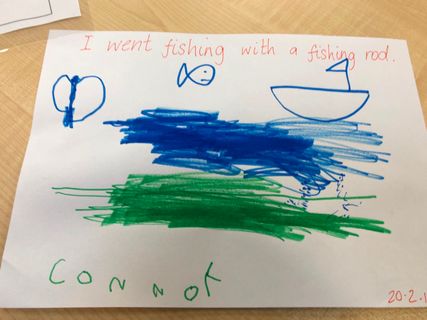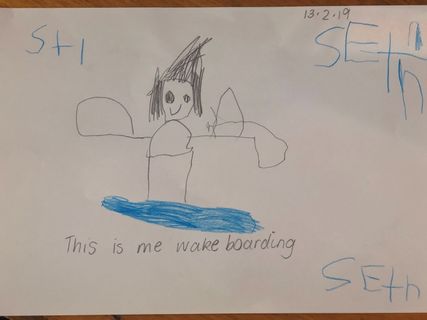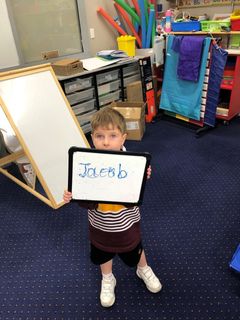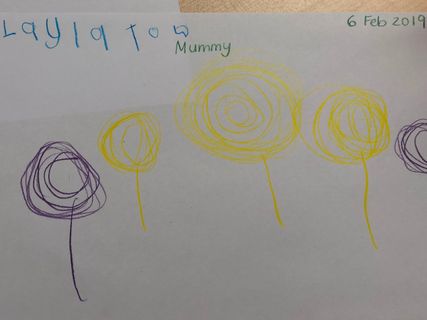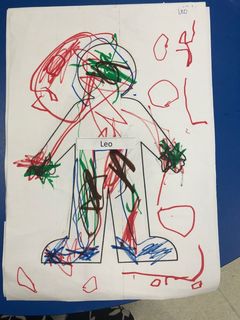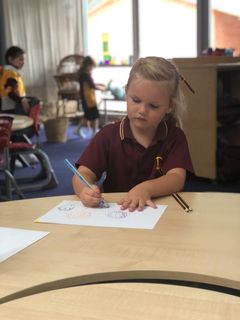Supporting young writers at home
Several times in the first two weeks of Kinder tuminana, I have been reminded of how much young children love to write — they’re always in search of a marker, paintbrush or crayon to ‘leave their mark’.
As can be seen in the photos accompanying this article, these early illustrations and scribbles are an important step on the path to literacy. Parents can support a writer’s efforts in some very simple ways at home and it’s never too early to start.
A child’s writing typically goes through several stages, beginning with scribbling that probably won’t include recognisable shapes or letters. From there, children tend to write using more letter-like shapes and later, they may create a piece of writing that includes random strings of letters. Regardless of the stage, recognise that each effort of crayon to paper has value.
In the Early Years classrooms, opportunities to write abound. Some are for particular reasons such as a recount of the weekend, a procedure which details the cooking process using a recipe or creating a birthday card for a family member or friend. These are also opportunities which can be easily replicated at home.
Writing time can become a part of a family’s daily life with the provision of time and some fun materials for writing. These may include smelly markers, fat pencils and paper of all shapes and sizes.
Encouraging your child to draw and/or write is easily achieved. However, it can become a much richer experience for everyone if you then use this time to talk about what’s been created. This teaches children that illustrations and print tell a story that can be read over and over again.
Early efforts will probably be readable only by your child, but let your child feel like the expert with that piece of writing. As your child gets older, you may find that the writing time starts to include more emphasis on letters and sounds. A child’s name and simple words like Mum, Dad and love are often penned early. Regardless of what’s been written, be proud of the work and display it for all to see.
Writing down what your child says is a simple but effective way to model many important aspects of written language. These activities may take place after a family adventure, an exciting event, or a shared book experience.
It can be as simple as writing down a favorite part of a movie or book or recording what was for dessert that night. Have your child sit next to you or watch you write. Your child’s watching will help him or her become aware of many conventions of written language, including capitalisation, spacing between words, and punctuation.
Keep the dictated sentences short, and use your best handwriting! These dictated sentences may be among the very first things your young writer reads on their own. When you’re done writing, encourage your child to re-read the sentences along with you.
Regardless of topic, it’s always fun to hear what your child thinks was the most interesting part of a book or the most exciting part of their day. Capturing it in writing will create a memory, and it will also help your child further down the path of literacy.
Mrs Jane Doyle - Coordinator of Teaching & Learning K-2
 A Catholic School in the Salesian Tradition
A Catholic School in the Salesian Tradition